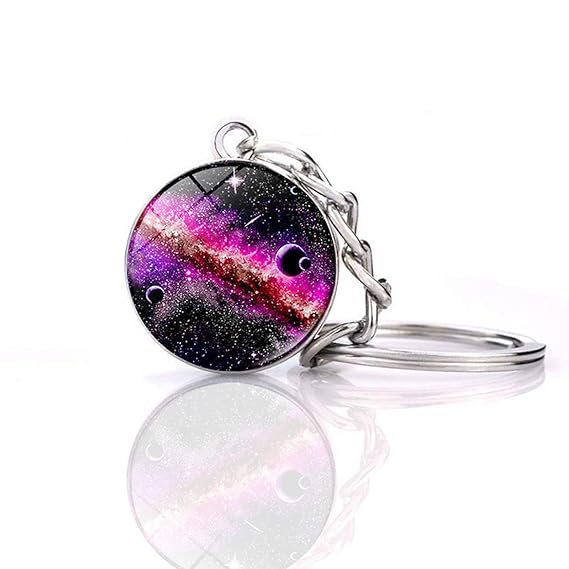Blog
A Step-by-Step Guide to Report a Dog Bite Incident

Dog bites can be traumatic and require immediate attention to prevent further complications. Knowing how to handle and report a dog bite is crucial for your health and safety, as well as for legal and public health reasons. Whether you’re dealing with a dog bite incident locally or trying to understand how to report a dog bite in Orange County, this guide will provide you with a detailed, step-by-step approach to ensure you are well-prepared to handle such a situation effectively.
Introduction to Dog Bites Cases
Dog bites occur more frequently than most people expect. According to the Centers for Disease Control and Prevention (CDC), about 4.5 million dog bites occur in the United States each year. While many bites are minor, some can result in serious injuries or infections. Properly reporting a dog bite not only helps you get the necessary medical care but also ensures that the dog’s behavior is appropriately addressed to prevent future incidents.
This blog will walk you through the steps to take immediately after a dog bite, the general protocol to follow, potential complications, and what happens when you report a dog bite.
What to Do If a Dog Bites You
If you are bitten by a dog, it’s essential to take immediate action to reduce the risk of infection and other complications. Here’s what you should do:
- Stay Calm:
Panic can exacerbate the situation. Try to remain calm to assess the severity of the bite and take appropriate action.
- Secure the Area:
Quickly distance yourself from the dog to avoid additional bites.
- Assess the Wound:
Determine the severity of the bite. If the wound is deep, bleeding heavily, or if you cannot clean it properly, seek medical attention immediately.
- Clean the Wound:
Clean the bite wound with soap and water to minimize the risk of infection. Apply an antiseptic if available.
- Control the Bleeding:
Use a clean cloth or bandage to apply pressure to the wound to stop the bleeding.
- Cover the Wound:
Once bleeding is under control, cover the wound with a sterile bandage to keep it clean.
- Seek Medical Attention:
Even if the bite seems minor, it’s important to see a healthcare provider. They can properly clean the wound, prescribe antibiotics if necessary, and check for potential rabies exposure.
General Protocol to Follow in Case of a Dog Bite
Once you have taken immediate steps to address the bite, follow this general protocol to ensure the incident is appropriately reported and managed:
- Identify the Dog and Owner:
If possible, get information about the dog and its owner. This includes the dog’s vaccination status, particularly rabies vaccination.
- Document the Incident:
Write down the details of the incident, including the time, location, and circumstances of the bite. Take photographs of the wound and any visible injuries.
- Contact Authorities:
Report the bite to local animal control or public health authorities. Share all the details you have collected with them.
- File a Police Report:
Depending on the severity of the bite and local regulations, you may need to file a police report. This establishes an official documentation of the incident.
- Consult an Attorney:
If the bite resulted in significant injury or if you face challenges with medical expenses, consider consulting a personal injury attorney to understand your legal rights and options.
Possible Complications in Reporting Dog Bite Cases
Reporting a dog bite is essential but can come with various challenges. Being aware of these can help you navigate the process more effectively.
Legal Complications
- Liability Issues: The dog’s owner might dispute liability, leading to legal disputes.
- Insurance Claims: Insurance companies may require extensive documentation and may dispute claims.
- Privacy Concerns: Legal proceedings can involve sensitive personal information.
Owner Retaliation
- Hostility: The dog’s owner might react defensively or angrily, potentially leading to threats or harassment.
- Social Tensions: Reporting a bite involving a neighbor or acquaintance can strain relationships.
Bureaucratic Hurdles
- Inconsistent Procedures: Reporting protocols vary by location, leading to potential confusion.
- Slow Response Times: Delays from authorities can complicate follow-up.
- Paperwork: Reporting involves substantial documentation, which can be time-consuming.
Medical and Health-Related Complications
- Infections: Ongoing medical issues from infections can complicate the reporting process.
- Mental Health Impact: The trauma of a bite and the stress of reporting can affect mental health.
Regulatory and Enforcement Issues
- Limited Resources: Animal control may have limited resources to investigate thoroughly.
- Inadequate Penalties: Penalties for aggressive dogs might be insufficient in some areas.
- Public Health Data: Inconsistent reporting can impact the accuracy of public health data.
Understanding these potential complications can help you prepare for and effectively manage the process of reporting a dog bite, ensuring your health and legal rights are protected.
What Happens When a Dog Bite Is Reported?
Reporting a dog bite sets several processes in motion, which can vary depending on local laws and regulations. Here’s what generally happens:
- Animal Control Investigation:
Animal control officers will investigate the incident, including verifying the dog’s vaccination records and assessing the dog’s behavior and history.
- Quarantine of the Dog:
In cases where rabies is a concern, the dog may be quarantined for a specific period to monitor for signs of the disease.
- Owner Notification and Actions:
The dog’s owner will be notified and may be required to take certain actions, such as providing proof of vaccination, keeping the dog under control, or even euthanizing the dog if it poses a significant threat.
- Medical Follow-Up:
You will be advised to follow up with your healthcare provider to monitor the wound and address any complications.
- Legal Proceedings:
If the bite leads to legal action, such as a personal injury lawsuit, the report and investigation findings will be crucial evidence.
- Public Health Records:
The incident may be recorded in public health records to track dog bite statistics and prevent future incidents.
Conclusion
Being bitten by a dog is a distressing experience, but knowing how to respond can mitigate the physical and emotional impact. By following the steps outlined in this guide, you can ensure your safety, receive proper medical care, and contribute to public health and safety by reporting the incident. Remember to stay calm, seek medical attention, document the incident, and cooperate with authorities to address the situation appropriately. Taking these steps not only helps you recover but also helps prevent future dog bite incidents, creating a safer environment for everyone. Also remember to contact the attorneys at LA Dog Bite Law for legal assistance.
Blog
From RSVP to Real-Time Interaction: How Text Messaging is Changing Events

Table of contents
• Introduction to SMS Event Messaging
• Advantages of Texting in Event Management
• Event Promotion Strategies Using Text Messaging
• Enabling Attendee Engagement with Text Messaging
• Examples of How Effective Event Texting Can Be Proven
• Implementing Text Alerts for Meeting Events: Best Practices
• Problems and Resolutions in Event Text Messaging
• Future Trends in Event Text Messaging
Introduction to SMS Event Messaging
Today, the mediums/units of communication have improved many times compared to their past standing on any platform. One of the most potential tools that any event organizer can use today is text messaging for events. It stands efficiently, making everything easy because a user should always feel obliged to text participants directly to disseminate all vital information promptly and candidly. Over the years, beginning as a personal communication tool, text messaging has become a potent tool for managing any event. It also puts up the need for operation by the event planners to raise their level of service delivery and satisfy the audience. It has changed how event organizers reach and will continue introducing a more personal and practical approach, hence the rise of satisfaction and engagement levels.
Advantages of Texting in Event Management
When event management has all these superiorities, text is added as the most salient feature; it’s a direct form of communication so that the recipient receives the message immediately. In general, the percentage of open rate is 98% for text messages, while in the case of email, it does not cross over 20%, making text the most robust tool for urgent notifications of last-moment changes. Finally, text messaging brings order to the logistical coordination of events. It is always wise to coordinate the staff with many volunteers; even sending in schedule updates at very late hours must be done, as distributing a change of plans or virtually every kind of note is valuable to anyone. It is often valuable right before a coherent main event when many teams and droves of people have to assemble in one location simultaneously. It is an easy, rapid outreach system guaranteed to each person promptly and efficiently with vital information.
Event Promotion Strategies Using Text Messaging
Event promotion helps you gather as much attendance as possible for your event. Maximum turn-out and active participation will be achieved through promotion after the customer has been involved in the product or service through pre-event text messages, event details, and special offers. But that’s not even all. It can be your solution for those last-minute promotions. Whether it’s an abrupt swing that happened with your event’s program lineup or the final call for action to help push some more ticket sales over the edge, text messages ensure that such changes at least reach your text-working audience a tad immediately. This kind of proneness isn’t found when using other communication methods. It could be enough to drastically change an event filling toward maximum potential instead of falling short on supposed building estimates. Time sensitiveness ignites the compelling force that creates an urgency that fuels the desired lifestyle.
Enabling Attendee Engagement with Text Messaging
Having engagement with attendees throughout an event is critical. There could be very creative ways by which attendees could be engaged through text messaging—for example, creating an answering poll or survey that entertains the audience or getting real-time feedback in an effort for on-the-fly adjustments to improve the event. It’s one more way for the attendees to get exclusive content through text messages, thus adding more value.
Chances of discounts, exclusive materials, or behind-the-scenes experiences spark the feeling of making an extra effort for the participant. A real-time text platform may help in cases of immediate questions while improving the whole Event experience. Doing so makes one more likely to get to an appreciative phase, thus widening the positives of the event.
Examples of How Effective Event Texting Can Be Proven
Other events that fully seized the opportunity provided by text messaging include Vivid Sydney—each exceptional annual event found maximum utilization of text messages in controlling the crowded space, explicitly big crowds within the locale at a time, allowing guests to extend their experience through varied live prompts, and one-on-one interaction. Last-minute details of showings, performances, and unique displays were communicated in real time to individualize the experience for guests. Another example is the big sporting event, in which text polls, interactive trivia, and highlights of notable events were sent to the audiences’ cellphones. These highlighted what was happening to the participants and made the event pleasant. Using interactive aspects within the layout, organizers tailored an occurring interaction ambiance, developing a considerably ameliorated comprehensive experience.
Implementing Text Alerts for Meeting Events: Best Practices
Always get the person’s permission to text first, then ensure they can opt-out anytime. You can add a bit of pizzazz during your text creation to ensure the message is received positively. Begin by getting to the point and being precise. Consider time frames because you want to send the message when it will get opened—for example, early in the morning, evening, or on weekends. At times, it can make all the difference, while at others, depending on the time, it is ignored. You can make a most astute decision regarding the most appropriate time to deliver messages, provided you know the audience’s definable characteristics and interests.
Problems and Resolutions in Event Text Messaging
Text messaging is one of the best strategies for marketing events. However, with its numerous benefits also come some issues. Text messaging is thus one of such issues. Make it simple for attendees to know how to opt out as you do to avoid any repercussions in court. Assure your marketplace good relations by ensuring they can opt out quickly. Delivery issues, on the other hand, are another matter of concern. Engage leading service providers to guarantee delivery of messages in good time, an important aspect especially when giving updates that bear timelines. Besides this, don’t let an overload of messages make your message go straight to the spam filter. Furthermore, this would help maintain a balance so that necessary communications are made appropriately without overdoing it and keep your audience engaged but not overwhelmed.
Future Trends in Event Text Messaging
The future looks more promising regarding text messaging at events, with such capabilities as AI and chatbots, which would go a step beyond responding to the still-large number of queries by the masses. AI and chatbots might individually approach topics for any receiver if implemented within texting. The occasion of a personalized single touch can be brought about through automated and individually addressed streams. With the maturation of these technologies, messaging can become more granular and individual-based, responsive to each attendee’s particular preferences and behaviors. Such personalization makes communications not only more relevant but also practical. Other than that, with the growth of multichannel messaging, a possibility for richer engagement is presented. In such cases, sending out images, GIFs, or even short videos could make the messages far more attractive and informative. It can attract your audiences and provide affordable information by providing versatile content.
Blog
Crafting Custom Keychains: Tips and Techniques for Beginners

Are you interested in making your custom keychains but not sure where to start? Crafting custom keychains can be a fun and rewarding hobby for beginners. In this article, we will provide you with some tips and techniques to help you get started on your keychain-making journey.
Getting Started with Custom Keychains
To begin making your custom keychains, you will need a few essential materials. These may include:
1. Keychain Hardware: This can include key rings, lobster clasps, and chains.
2. Charms or Pendants: Choose charms or pendants that reflect your personal style or interests.
3. Beads or Crystals: These can add a touch of sparkle to your keychains.
4. Jump Rings: These are essential for attaching charms to keychain hardware.
Once you have gathered your materials, you can start assembling your custom keychains. Here are some techniques to consider:
Techniques for Custom Keychain Making
1. Beaded Keychains: Stringing beads onto a wire or cord can create unique and colorful keychains. You can experiment with different bead sizes, shapes, and colors to create a one-of-a-kind design.
2. Dakimakura Keychains: Dakimakura, or body pillows, are a popular choice for creating custom keychains. You can use fabric markers or paints to decorate the dakimakura with your own designs and then cut them into keychain-sized pieces.
3. Resin Keychains: Resin keychains are another popular option for custom keychain making. You can pour colored resin into keychain molds and add embellishments like glitter or small charms. Once the resin has hardened, you will have a durable and unique keychain.
Tips for Crafting Custom Keychains
1. Experiment with Different Materials: Don’t be afraid to try out new materials and techniques when making custom keychains. You may discover a new favorite style or design by stepping out of your comfort zone.
2. Personalize Your Keychains: Custom keychains make great gifts for friends and family. Consider personalizing keychains with initials, birthstones, or special symbols to make them extra special.
3. Practice Patience: Crafting custom keychains can be a relaxing and enjoyable process, but it also requires patience and attention to detail. Take your time with each keychain to ensure a high-quality finished product.
Crafting custom keychains can be a fun and creative way to express your individuality. Whether you prefer beaded keychains, dakimakura keychains, or resin keychains, there are endless possibilities for customization. Remember to gather your materials, experiment with different techniques, and personalize your keychains for a truly unique finished product. Happy crafting!
Blog
How to Make Custom Tote Bags and Custom Keychains

Are you looking to add a personal touch to your accessories? Custom tote bags and keychains are a great way to express your unique style and creativity. In this article, we will guide you through the process of making custom tote bags and keychains that are one-of-a-kind and truly reflect your personality.
Custom Tote Bags
1. Materials Needed:
- Plain tote bag
- Fabric paint
- Paintbrushes
- Stencils (optional)
- Iron-on patches (optional)
2. Instructions:
- Choose a design or pattern that you want to apply to your tote bag. This could be a favorite quote, a cute graphic, or simply your initials.
- Use fabric paint and paintbrushes to carefully apply your design onto the tote bag. If you’re not confident in your painting skills, you can use stencils to create a more precise design.
- Let the paint dry completely before using the tote bag. If you want to add some extra flair, you can also iron on patches for a fun and textured look.
3. Personalization Ideas:
- Add your favorite quote or mantra
- Incorporate your favorite colors
- Use your initials or monogram
- Create a nature-inspired design
Custom Keychains
1. Materials Needed:
- Keychain rings
- Charms
- Beads
- Pliers
2. Instructions:
- Start by selecting charms and beads that represent your interests or hobbies. This could be a miniature camera charm for photography enthusiasts or a colorful bead for a pop of personality.
- Use pliers to attach the charms and beads to the keychain ring. Make sure to secure them tightly so they don’t fall off.
- Get creative with your design by mixing and matching different charms and beads to create a unique keychain that is truly one-of-a-kind.
3. Personalization Ideas:
- Choose charms that reflect your hobbies or interests
- Mix and match different colors and textures
- Create keychains for your friends or family members as personalized gifts
- Experiment with different shapes and sizes of charms and beads
By following these simple steps, you can create custom tote bags and keychains that are not only stylish but also meaningful. Whether you’re looking to update your own accessories or make personalized gifts for loved ones, the possibilities are endless when it comes to customizing these everyday essentials. So why wait? Start crafting your own unique designs today!
Customized keychains are a fantastic way to add a personal touch to your everyday essentials. Whether you want to showcase your favorite color, sport a meaningful charm, or simply want to add your name for a fun flair, customized keychains are a stylish and practical accessory. By tailoring your keychain to suit your unique tastes, you’re not only keeping your keys organized but also expressing your individuality in a fun and fashionable way. So, why settle for a plain keychain when you can have one that’s as special and one-of-a-kind as you are?
Learn how to make custom tote bags and keychains in this step-by-step guide. Add a personal touch to your accessories with these creative DIY ideas.
In conclusion, making custom tote bags and keychains can be a fun and rewarding DIY project. By using your creativity and personal style, you can create accessories that are truly unique and reflective of your personality. So gather your materials, follow the instructions, and start crafting your own custom designs today!
-

 Technology4 months ago
Technology4 months agoExploring Entretech.org: Unveiling the Future
-

 Technology4 months ago
Technology4 months agoGPT66X: Revolutionizing Language Models
-

 Eentertainment4 months ago
Eentertainment4 months agoThe Flower of Veneration Chapter 1: A Journey into Intriguing Realms
-

 Life Style4 months ago
Life Style4 months agoExploring Myfavouriteplaces.org:// blog: A Journey Begins
-

 Games4 months ago
Games4 months agoFour Digits to Memorize: Unlocking the Power of Memory
-

 Technology4 months ago
Technology4 months agoAmazons GPT55X: Revolutionizing Natural Language Processing
-

 Technology4 months ago
Technology4 months agoUnderstanding “qxefv” and Its Impact on Diverse Industries
-

 Technology4 months ago
Technology4 months agoUnlocking the Potential of TrendzGuruji.me for Awareness




















